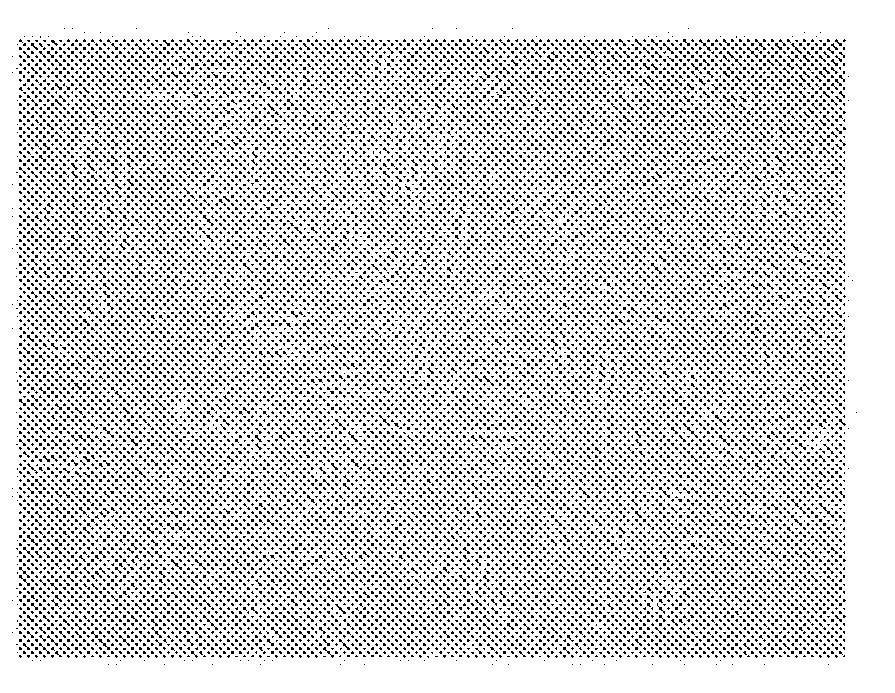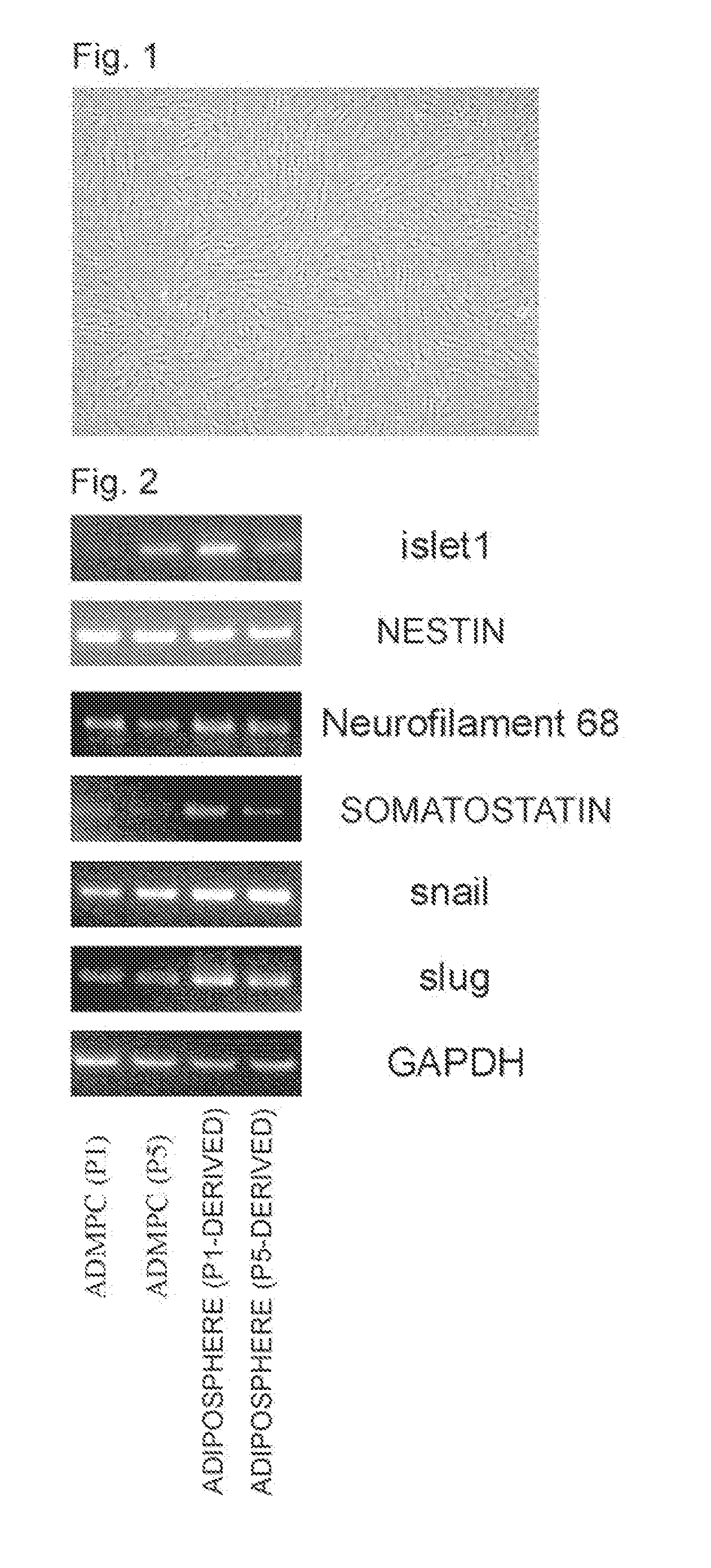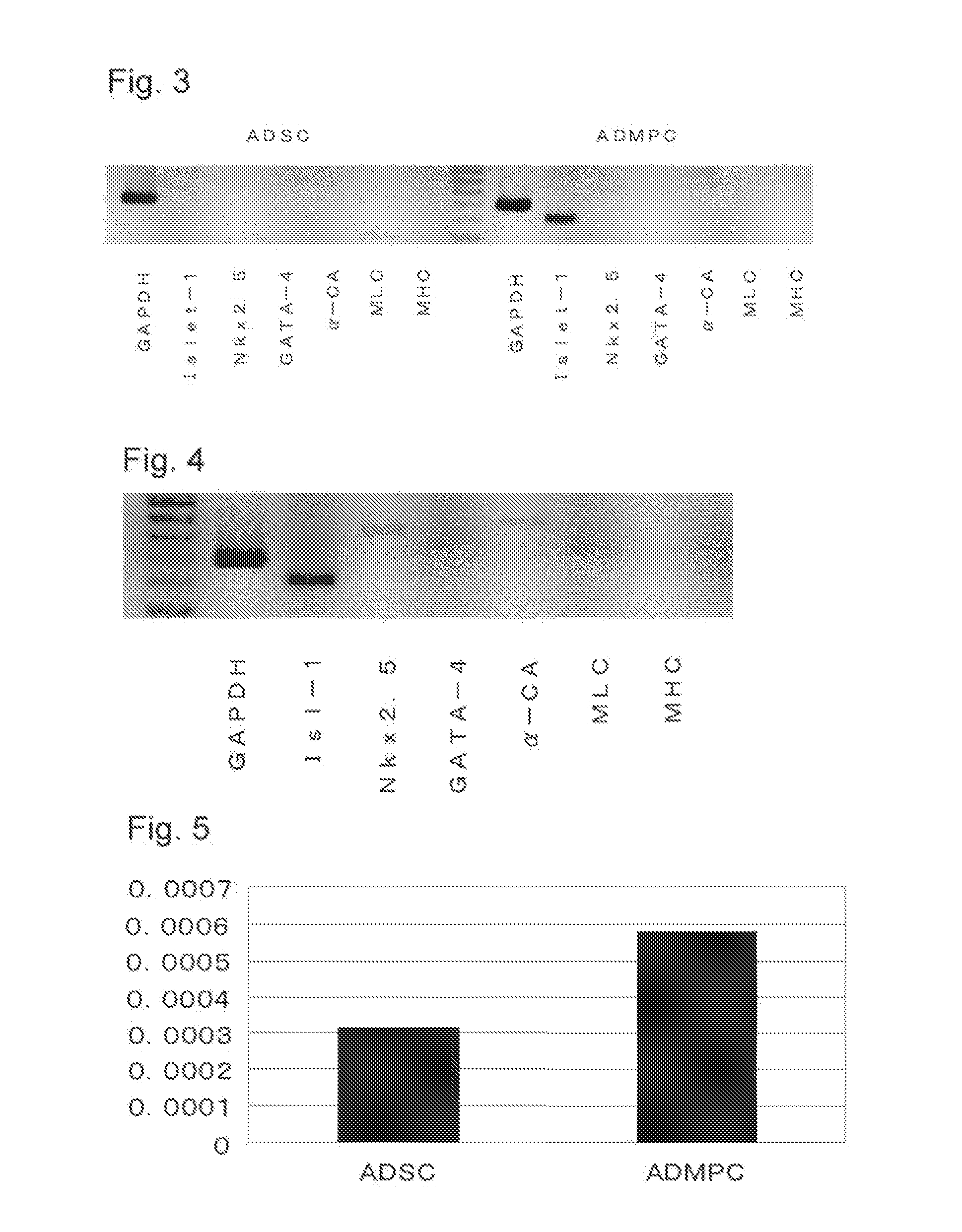Multipotent progenitor cell derived from adipose tissue
- Summary
- Abstract
- Description
- Claims
- Application Information
AI Technical Summary
Benefits of technology
Problems solved by technology
Method used
Image
Examples
example 1
Collection of Adipose Tissue from Human Subject
[0147]Excessive adipose tissue was extracted during gastric cancer operation from ten subjects (four males and six females) from whom informed consents were received. The protocol was according to Osaka University Graduate School of Medicine Review Boards for Human Research. All subjects were fasted for at least 10 hours. The age of the subjects was 55±5 years (average ±SE; 40 to 60 years range). There were no subject being administered with a steroidal agent or TZD. From the subjects, 1 to 10 g of abdominal subcutaneous (outside of fascial surface) adipose tissue and dorsal mesogastrium adipose tissue.
Isolation and Culture of ADMPC
[0148]The adipose tissue was sliced, and then digested in Hank's buffered saline solution (HBSS) containing 0.075% collagenase (Sigma Chemical Co.) for one hour while shaking in a 37° C. water bath. The digestion product was filtered with Cell Strainer (BD Bioscience) and centrifuged at 800 g[9] for 10 minute...
example 2
ADMPC Expression Characteristics
[0149]Total RNA was isolated from ADMPC and adiposphere, using Mag-Extractor kit (TOYOBO) according to the protocols recommended by the manufacturer. Dnase treatment was carried out on 500 ng of total RNA and cDNA was synthesized using Superscript III reverse transcriptase RNase H (−) (Invitrogen). RT-PCR was carried out for Islet-1, Nkx2.5, GATA-4, α-CA, MLC, MHC, nestin, neurofilament 68, somatostatin, snail, slug, and GAPDH, using KOD-plus (TOYOBO), under the following conditions: 40 cycles of degeneration at 94° C. for 2 minutes, then degeneration at 94° C. for 15 seconds, annealing at predetermined temperature for 30 seconds and elongation at 68° C. for 30 seconds elongation. The annealing temperature and primer sequence of each gene is shown in Table 1. As a control, adipose tissue-derived stem cell (hereinafter referred to as “ADSC”) obtained according to methods described in Japanese Translation of PCT Application No. 2005-502352 was used. The...
example 3
Verification of Multipotentiality of ADMPC
[0152]1. Differentiation Capability into Pancreatic Cell
[0153]ADMPCs were differentiated into pancreatic endocrine cells by the methods described in WO 2007 / 039986. The obtained pancreatic endocrine cells are shown in FIG. 9. The ADMPCs were verified to be capable of differentiating into pancreatic endocrine cells, that is to say, to have functions as pancreatic progenitor cells. In addition, the efficiency of differentiation from such ADMPCs into pancreatic endocrine cells was higher than that from ADSCs (data not shown).
2. Differentiation Capability into Hepatocyte
[0154]DMSO (0.1%), HGF (10 ng / mL), bFGF (10 ng / mL), and oncostatin M (10 ng / mL), which are known to cause a hepatic progenitor cell to differentiate into a hepatoblast / hepatocyte were added to a Culture Medium I to prepare Culture Medium II. ADMPCs were cultured for 14 days in Culture Medium II to obtain hepatocytes. The obtained hepatocytes are shown in FIG. 10. The ADMPCs were ...
PUM
 Login to View More
Login to View More Abstract
Description
Claims
Application Information
 Login to View More
Login to View More - R&D
- Intellectual Property
- Life Sciences
- Materials
- Tech Scout
- Unparalleled Data Quality
- Higher Quality Content
- 60% Fewer Hallucinations
Browse by: Latest US Patents, China's latest patents, Technical Efficacy Thesaurus, Application Domain, Technology Topic, Popular Technical Reports.
© 2025 PatSnap. All rights reserved.Legal|Privacy policy|Modern Slavery Act Transparency Statement|Sitemap|About US| Contact US: help@patsnap.com



